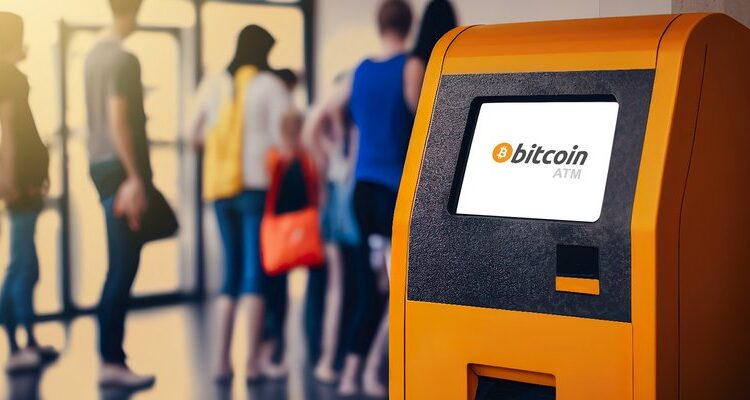
Crypto ATMs are driving traffic to convenience stores due to offering convenient access to cryptocurrency.
Beyond the key mantra of “Location, Location, Location,” a convenience store’s cornerstone to success and growth comes down to another key factor: Traffic.
The stores that secure ongoing traffic are those that engage and supply their communities with goods, services and experiences that bring them back, again and again. It’s why low milk prices are promoted, along with the rise of new lottery tickets, Keno kiosks and ATMs.
Today, there is another kind of service attracting new customers and driving traffic to convenience stores across the globe — crypto ATMs.
Crypto ATMs have been on the rise over the last decade and have grown significantly in popularity among convenience stores over the last two years.
This rise in prominence is because the relationship between crypto ATMs and convenience stores is a symbiotic one. Crypto ATMs provide convenience stores with a new source of revenue, while convenience stores provide crypto ATMs with an established place to operate that already has a consistent, high volume of foot traffic. This relationship is likely to continue to grow in the future as both businesses continue to expand.
The benefits:
Convenience
Crypto ATMs provide a convenient way for people to buy and sell bitcoin and other cryptocurrencies. They are often located in accessible, everyday locations, such as convenience stores, making them even easier to access.
The everyday amenities already present at such locations – such as gas stations, basic grocery items, traditional ATMs, and car washes — pair well with crypto ATMs, rendering the kiosks as yet another option to streamline an errand run or rest stop into one seamless trip.
Accessibility
Crypto ATMs are accessible to people who may not have access to traditional financial institutions. This includes people who live in rural areas or who have limited access to traditional banking systems.
About 14.1% of households, or 18.7 million people, in the United States are underbanked, relying on something other than a bank account for their financial needs. These people could benefit from an easy-to-use digital currency solution.
Crypto can be a useful tool to a wide sect of the population that are underbanked based on a variety of financial, social, and institutional reasons. From increased accessibility and privacy to freedom from human bias, there are many potential upsides to participating in the digital economy for those without access to traditional financial services.
Access to crypto ATMs at gas stations and other convenient locations gives them the accessibility they need without having to drive very far or go out of their way.
Speed
Crypto ATMs can be used to buy and sell Bitcoin and other cryptocurrencies quickly and easily. This stands in stark contrast to traditional methods of buying and selling cryptocurrencies, which can be time-consuming and feel overly technical to many users.
Even the most inexperienced user can buy and sell bitcoin quickly, making this method faster than alternative ways of trading.
Expanded hours
Banks are open 9-5, and sometimes not even that long. Convenience stores generally offer longer hours than traditional financial institutions, and sometimes they’re closer to home. You’ll spend less time running down to the corner store whenever it’s convenient for you than waiting for the bank to open and potentially needing to drive across town.
Security
Thanks to the Know Your Customer (KYC) protocols that many crypto ATMs like Bitcoin Depot ATMs implement, these machines are incredibly safe. People must provide a valid ID to conduct transactions, which is a crucial step to prevent fraud and ensure that buying and selling crypto is safe and secure for all customers.
Mutually Beneficial
In addition to the consumer-focused benefits listed above, there are several other reasons why this relationship provides mutual benefits for both the individual convenience store and the Crypto ATM kiosk.
- Crypto ATMs help convenience stores attract new customers. People who are interested in buying or selling cryptocurrencies will be more likely to visit a convenience store that has a crypto ATM. This leads to increased foot traffic and sales for the convenience store.
- The crypto ATM market is growing at a rapid pace. Many estimate that they will increase in revenue by more than 50% each year for the following 5 years. That means that any business willing to host at least one could increase its foot traffic and revenue.
- Crypto ATMs create repeat customers. Even if it’s not the crypto ATM that brings customers into the store, those coming in to purchase something else will see that there’s a crypto ATM available, and return when they want to use it, creating repeat customers.
The relationship between crypto ATMs and convenience stores can provide long-term benefits to both parties. Crypto ATMs provide convenience and accessibility for people who want to buy and sell bitcoin, while convenience stores benefit from increased revenue and foot traffic. This relationship is likely to continue to grow in the future as both businesses continue to expand.
Moving in the right direction
Making crypto easier to access with greater visibility is great for the market overall. There’s a massive potential network, with over 150,000 convenience stores in the United States alone. If grocery stores join in the fun, that’s an additional 40,000 locations.
Both of these types of stores provide a massive opportunity for expansion. Crypto ATMs require a very small footprint in terms of square footage and offer huge benefits. They attract paying customers, increasing potential revenue for any type of business willing to host them.
Scott Buchanan serves as the COO of Bitcoin Depot, where he oversees day-to-day operations of the business as well as long-term strategic planning. Scott brings a strong professional background in accounting and finance, having previously worked as a manager for Acuity Brands and an assurance associate for KPMG. Scott is also a Certified Public Accountant with a master’s degree in accounting from Wake Forest University.






